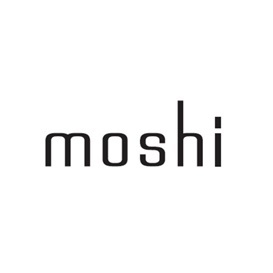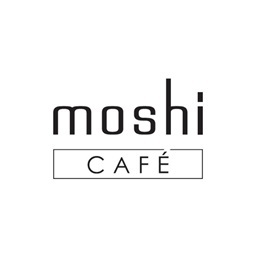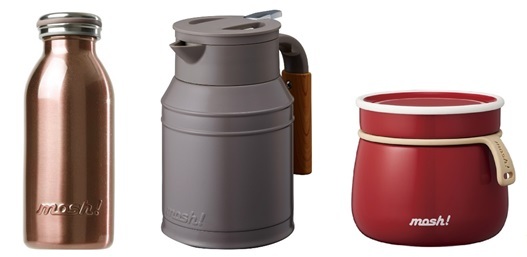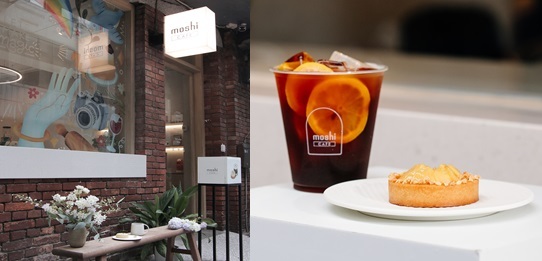Guard Against Trademark Pre-filing and Post-filing Risks - "mosh!" Loses Trademark Opposition by "moshi"
Date: 30 November, 2022
【Volume 95】
Every applicant wishes that their trademarks will be registered as soon as possible when they file the applications. Nevertheless, when it comes to managing a trademark in a long-term vision, the key point is not pursuing registration but guaranteeing the stability of registration. Therefore, assessment on trademark strategies and potential risks are must-have steps to prevent possible obstacles before registration and disputes after registration.
In this regard, facts and opinions on canceling trademark registrations revealed in the Taiwan Intellectual Property and Commercial Court 2021 XingShangSuZi No. 58 Judgment are suitable reference for devising trademark strategies and risks prevention measures.
Case Fact
Doshisha Corporation, a Japanese company, applied for the registration of the trademark “mosh!” (“Contested Mark”) in class 21 including water bottles, containers and tableware in July 2017. The trademark was granted registration in March 2018.
On the last day of opposition period, AEVOE INC, a Taiwanese company, claimed that there is likelihood of confusion between the contested trademark and its own trademarks and filed an opposition against the contested trademark based on its 11 registered trademarks, “moshi” and “moshi CAFÉ”. After the examination, the Taiwan Intellectual Property Office deemed that the relevant consumers may confuse the contested trademark with 2 of the earlier trademarks (“Conflicting Marks”) and canceled the registration of the contested trademark accordingly.
Doshisha disagreed with the decision and filed a lawsuit with the Taiwan Intellectual Property and Commercial Court. The litigation was dismissed in February 2022. Afterwards, Doshisha filed an appeal with the Taiwan Supreme Administrative Court. The Taiwan Supreme Administrative Court upheld the decision of the first-instance court and dismissed the appeal in May 2022.
| Contested Trademark | Conflicting Mark 1 | Conflicting Mark 2 | |
|---|---|---|---|
| Trademark Specimen |  |
 |
 |
| Registration Number | 01901517 | 01885146 | 01885152 |
| Application Date | July 25, 2017 | June 5, 2017 | June 7, 2017 |
| Designated Goods/Services | Class 21
Water bottles; water bottles for travel, etc. |
Class 43
Restaurant; coffee shop; kitchenware rental; glassware rental, etc. |
Class 43
Restaurant; coffee shop; kitchenware rental; glassware rental, etc. |
| Use of the Contested Mark on products |
|---|
 1 1 |
| Use of the Conflicting Marks on services |
 2 2 |
Opinions of the Intellectual Property and Commercial Court
- There is an average degree of similarity between the trademarks
Doshisha claimed that the design of fonts, pronunciation and overall impression of the specimen of the Contested Mark and the Conflicting Marks are different under global assessment. Therefore, trademarks of both parties are not similar.
However, in the perspective of appearance and pronunciation, all three trademarks have the coinciding initial four letters “mosh”. The trademarks differ in their last character “i” or “!”, and the negligible difference between the two characters is whether the “•” is placed above or below the “|”.
When comparing phonetic similarities of the trademarks,, the Contested Mark should be pronounced as “モッシュ (Mosshu)” or “モシュ (Moshu)” in Japanese or “mo” “sh” in Roman letters. On the other hand, the Conflicting Marks should be pronounced as “もし (Moshi)” in Japanese or “mo” “shi” in Roman letters.
In summary, consumers with common knowledge and experience who exercise a normal degree of attention when purchasing the products, may be misguided that the goods/services of both parties come from an identical source or different but related sources. As a result, the Contested Mark and the Conflicting Marks have an average degree of similarity.
- The designated goods/services of the trademarks have an average degree of similarity
The court deemed that the designated services of the Conflicting Marks “kitchenware rental; glassware rental, etc.” and the designated goods of the Contested Mark “water bottles; water jars; containers, etc.” are all related goods or services for storage, processing and cooking in kitchen or food preparation. In other words, the purpose of the designated services of the Conflicting Marks “kitchenware rental; glassware rental” is to provide the designated goods of the Contested Mark including “water bottles”. Since these goods and services are common or relevant in their nature, function, method of use and targeted consumers, the designated goods/services of the contested trademark and the Conflicting Marks have an average degree of similarity.
Nevertheless, the other designated services of the Conflicting Marks such as “restaurant; coffee shop” have obvious dissimilarity to the designated goods of the Contested Mark in terms of suppliers, targeted consumers and other factors. Since relevant consumers are unlikely to confuse their source, they do not constitute similar goods or services.
- There were actual cases of confusion between the trademarks of both parties
According to the evidence submitted by AEVOE, several Taiwanese bloggers confused the Contested Mark with the Conflicting Marks in their blogs. Moreover, famous Taiwanese e-commerce platforms, namely MOMO, Shopee, and Rakuten Market, mistook the Conflicting Mark “moshi” for the Contested Mark. Apparently, there are actual events of confusion among the consumers.
To sum up, the registration of the contested trademark in class 21 is likely to cause confusion among the consumers, and contravenes Subparagraph 10, Paragraph 1, Article 30 of the Taiwan Trademark Act.
Wisdom Suggested Strategies
There are countless trademark registrations as entrepreneurs value intellectual property more than ever. However, even registered trademarks may face risks of invalidation after being deemed as causing confusion. Applicants and trademark holders should consider and adopt the following tips to assess the risks thoroughly and stay vigilant.
- File the application of registration as early as possible
Taiwan adopts the “first-to-file” principle. When it comes to the practice of examination, the date of application is a vital issue that cannot be underestimated. Take the above decision as example, the application dates of the Conflicting Marks are merely one month earlier than that of the Contested Mark. It is highly possible that we will see a totally different outcome if the application of the Contested Mark would have been submitted earlier.
- Collect the evidence of use and promotion actively
One of the common reasons for losing a trademark dispute case is that the evidence does not meet the formal requirements (such as time of use, or is not sufficient in quantity), with the result that a party could not prove the case to the court.
Therefore, once the trademark has been put into genuine use, the trademark holder should start collecting evidence of use such as receipts, record of sales numbers, proof of marketing costs, pictures or leaflets used for promotion, etc., to prove that the trademark is indeed used with its designated products. Collection of these evidence will definitely heighten the possibility of winning a potential dispute.
- Continuously monitoring on how the trademark is actually put into use
A trademark holder should continue to monitor the actual form of use of the trademark is used in the market and keep an eye on how the trademark is presented in sales channels and advertisements even after the trademark is registered. For instance, Trademark holders should be mindful of whether the trademark in use is identical to the registered specimen, whether “TM” or “®” are attached to the trademark, and whether the trademark correctly indicates the source of goods.
In additional to educating the consumers and relevant competitors that your mark has been registered, it also ensures that consumers will not be confused on the source of goods because of flawed promotion or acts of use. Furthermore, supervising the actual trademark use can make sure that the gap between the licensees and distributors’ actual use of trademark and the trademark as registered will not exceed a reasonable extent. By doing so, the trademark holders can ensure the trademark is not used in a form that alters the identity of the registration, and can satisfy the use requirement which prevents the trademark from being revoked. We have previous covered this issue in this article.
If you have any queries on the strategy of trademark application, collection and assessment of evidence for actual use, we recommend consulting with a professional attorney to protect your own rights.
[1] Source:
https://mosh.hk/product/mosh-%e4%bf%9d%e6%ba%ab%e7%93%b6-350ml-%e9%a6%99%e6%aa%b3%e9%87%91/
https://mosh.hk/product/mosh-%e4%bf%9d%e6%ba%ab%e5%a3%ba-1000ml-%e6%b7%ba%e6%a0%97%e5%95%a1/
https://mosh.hk/product/mosh-latte-%e7%87%9c%e7%87%92%e5%a3%ba-%e7%8e%ab%e7%91%b0%e7%b4%85-350ml/
[2] Source: Facebook page of moshi CAFÉ
Keywords: Trademarks Case Studies Invalidation Taiwan






